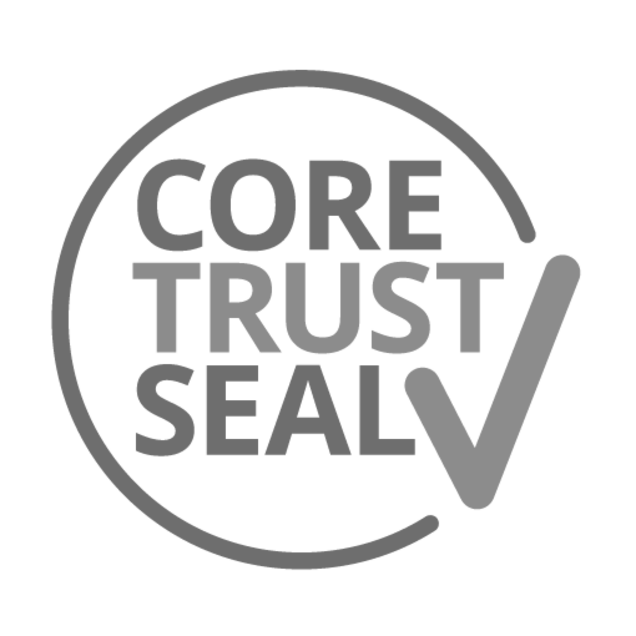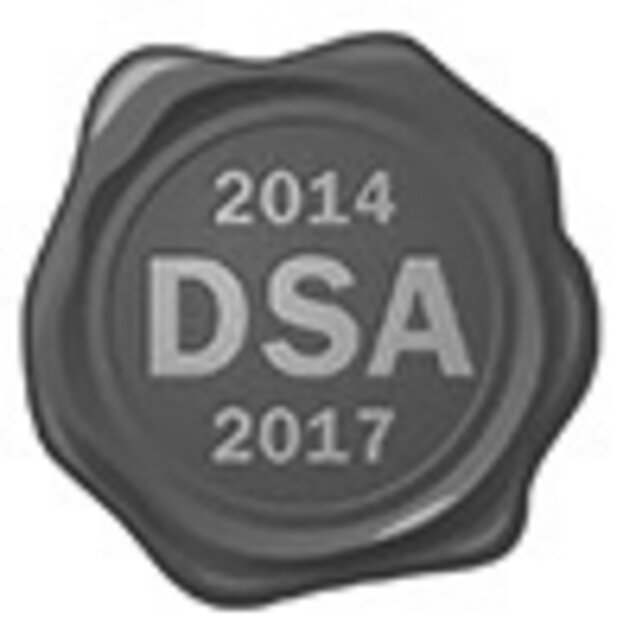Version 1.5 from 15/01/2024, authors: Monika Zarnitz / Yvonne Tunnat
1. Introduction
The preservation policy of the ZBW – Leibniz Information Centre for Economics defines the institutional guidelines for digital preservation.
The ZBW jointly operates a digital preservation system with the two other subject-specific German National Libraries – the Leibniz Information Centre for Science and Technology University Library, Hannover and the ZB MED (German National Library of Medicine - Information Centre for Life Sciences, Cologne/Bonn).
The Preservation Policy of the three German National Libraries [1] defines the valid guidelines for digital preservation for all three libraries and the use of the jointly operated digital preservation system. The ZBW Preservation Policy defines the institutional guidelines of digital preservation relating to the collections of the ZBW and the interests of the ZBW users. The policy serves to make these guidelines available to the users of the ZBW and to the data producers.
The policy is reviewed at least once a year to verify that the collection guidelines or the digital preservation handlings are still up to date.
2. Mission
The ZBW acquires national and international literature corresponding to its collection guidelines (chapter 2.2), creates bibliographic and content descriptions, provides it for supraregional lending, and ensures the long-term availability of the contents.
2.1 Mandate, tasks, target groups
As the German National Library of Economics it is the task of the ZBW to acquire literature and subject-specific information from the field of Economics and Business Studies, to index it, and to ensure its lasting availability to its target groups.
An ever increasing part of the collections, e. g. dissertations and working papers, is provided in digital form. The ZBW in its function as a subject-specific National Library is responsible for the long-term and sustainable availability of all digital content which it collects, licenses or produces by retrodigitisation of its collections, and which it archives on its own servers.
The ZBW ensures long-term-availability for the ZBW user groups, especially for the national and international economic research community. The interested public can also use the services and the holdings of the ZBW. The interests of these external groups must be taken into consideration by the digital preservation handling, although the digital preservation system of the ZBW itself is a so-called “dark archive”, which does not provide direct external access. Other target groups of the digital preservation are those ZBW colleagues who are responsible for those electronic services which are to be provided sustainably (e. g. the staff members responsible for the open access server EconStor).
2.2 Collection profile
The ZBW acquires and makes accessible economic literature published worldwide and sources relevant to the economic sciences. It enables access throughout Germany. It is actively shaping the transformation to Open Access and supports Open Access for economics publications from German scientific institutions.
The distinct disciplines of economics and business administration are taken into account in equal measure. The disciplines of economics are presented in differentiated form in the Standard Thesaurus for Economics (STW). Acquisition at the ZBW also takes related disciplines into account, in the sense of interdisciplinarity and auxiliary sciences relevant to economics.
In general, the ZBW acquires publications in the field of economics and sources relevant to economics without geographical restriction (worldwide). The acquisition intensity of the ZBW reflects the importance of research results from scientific institutions, and is graded according to countries and regions.
For Germany, the aim is to acquire as much of the literature published in the field of economics as possible. The acquisition of sources in the field of economics is comprehensive.
A comprehensive selection of economics publications is acquired from the United States of America. A selection of literature related to individual regions of the country and sources relevant to economics is acquired.
For all other regions of the world, a representative selection of economics publications is acquired.
Another special collection focus concerns publications of the leading business schools, business schools and economics research institutes internationally and the national central banks, which are comprehensively acquired.
The ZBW acquires publications that have been published as online resources or as printed publications. If a publication is available in both formats, the acquisition of the online resource is preferred, taking the licensing conditions into account.
The acquisition of so-called “grey literature” is of particular importance.
The ZBW strives for permanent availability and comprehensive archiving of its acquired publications. The archiving of online publications depends in individual cases on the technical, institutional and legal framework conditions.
The ZBW does not strive for the archiving of aggregated databases.
3. Principles of Digital Preservation
The ZBW aims to ensure the readability of its digital collections for the long-term. Since file formats and interpretation software can become obsolete very quickly, and the information contained in the digital data can only be made readable again with a high effort, the ZBW engages in digital preservation to minimise the risk of digital data becoming obsolete.
Usually the material hosted by the ZBW on its own servers is archived when no further changes are expected concerning the object itself and its metadata. If a change occurs after having been archived, however, the material is updated within the archive. The original data is always preserved additionally and will not be removed.
The team Digital Preservation is an inherent part of the ZBW. The ZBW prefers automated processes and workflows to spare its personal resources and to be able to master the growing number of digital objects. This is the reason why the workflows are scalable to a multiple of the current digital holdings.
The ZBW also aims to follow the commonly used best practices, and to have its diligence, reliability and transparency regarding the digital preservation of its digital holdings certified, e. g. with the Data Seal of Approval and the nestor Seal (based on the DIN-Norm 31644 [5].
3.1 Preservation watch, cooperations and network activities
It is the mission and the aspiration of the ZBW team Digital Preservation to be up to date with technical innovations, to watch them, to be informed about the newest developments and best practices of other institutions engaged in digital preservation, and to adjust the ZBW digital strategy accordingly. If it is possible and useful, national and international conferences are attended to stay in touch with the many developments in the area of digital preservation. The ZBW is also active in the German-speaking competence network nestor [4] and in the internationally active Open Preservation Foundation [6].
3.2 Metadata
All previously created descriptive metadata are handed over to the digital archive with the digital object. If there is an entry in the union catalogue GVK [7], the digital objects are enriched additionally with the metadata from the union catalogue. Additionally, technical metadata are extracted automatically which are useful to ensure long-term readability (see “Metadata in the ZBW Digital Archive“ [10]).
3.3 Legal compatibility
Usually, the permission to archive is granted by the data producer. If the data producer has not granted the explicit right to preserve the content, digital preservation takes place on the basis of the statutory exceptions.
3.4. Preservation level
Pure bitstream preservation only preserves the bitstream. Bitstrean Preservation makes no provision for editing objects.
As a principle, the ZBW aims to not only preserve the bitstream of its acquired and created digital material, but to preserve and ensure the readability and usability over time. This may include the migration to other file formats which are more suitable for long-term availability (3.7).
For some objects, however, this is not possible. This is true e. g. for password-protected data which prevents any editing of the data. The law does not allow the circumvention of this kind of protection. If it is impossible or denied to attain a password-free version of the contents, only the original bitstream of the corresponding objects will be preserved.
3.5. Preservation of data integrity
The integrity of the archived data is checked via checksums after each reading access. Since the data is saved redundantly, the corrupted data which might contain bit error can immediately be replaced by an intact version.
3.6 Preservation of authenticity
The original data which was ingested into the archive is preserved in principle. The additional presentations (derivatives) which serve the preservation of long-term readability are archived in addition and do not replace the original (Risk management and preservation planning in the ZBW Digital Archive [8]).
3.7 Preservation of completeness
The contents in the archive are preserved completely, which means that all files and metadata which belong to one intellectual entity are always preserved as a whole.
3.8 Preservation of legibility
If the ZBW Digital Preservation team can influence the file format in which the objects are acquired from the data producers or – in the case of digitization – in which file format the data is created, the following guidelines apply (see “Preferred file formats in the ZBW Digital Archive” [9]):
- standardized (e. g. via an ISO-norm)
- not depending on only one or few display tools
- (preferably world-wide) distribution and widely used
- open format or format is made open retroactively
In line with the risk management and preservation planning, previously archived material is migrated into preferred file formats where possible. Preservation planning includes checking that file formats present in the archive are current, and quality checks of the archived material in terms of compliance to the file format specifications. Detailed information about risk management and preservation planning can be found in the corresponding workflow documentation [8].
3.9 Preservation of retrievability
Every object in the digital archive has at least one persistent identifier in its metadata which is also part of the metadata in the original representation platform. In addition, each object receives an identifier within the digital archive.
All descriptive and technical metadata are actively searchable, so that the material is retrievable in various ways within the archive. If it is useful, the objects are bundled into logical sets or collections.
3.10 Observance of confidentiality
The digital archive offers a detailed access rights management with various configuration options. This guarantees at all times that no unauthorized persons can access the material and all embargo periods can be met. Although the digital archive is currently only used as a “dark archive”, all copyright-protected contents are identified as such, in case that the archive is converted into a “light archive” with external access before the embargo period expires.
3.11 Documentation of processes
All configurations and workflows used in the digital archive are documented and are regularly updated and published for all staff members in digital preservation within the three National Libraries.
In addition, tutorials are created which document the workflows, facilitate the use of the workflows for new staff members, and mitigate the risk of faulty work. The workflows are also published for staff members who are responsible for the material on the access platforms like EconStor.
All workflows are regularly optimized, and developed further, and the documentation updated correspondingly.
3.12 Access and use
The Digital Archive does not provide any external access and is used as a dark archive only. Only the ZBW Digital Preservation Team can access the archived material.
Access to the digital data takes place on the corresponding representation platforms (EconStor in the case of the ZBW). If there are access limitations, these are currently only managed by these representations platforms.
4. Technical infrastructure
The digital archive is used by the three subject-specific German National Libraries. The digital archive consists of all parts which are described in the OAIS-model:
- ingest
- data management
- archival storage: The storage is managed by the TIB in Hanover
(Preservation Policy of the three German National Libraries). - preservation planning
- administration: e. g. user management
- access: Only staff members can access the data
5. Responsibilities
Digital Preservation is a permanent task of the ZBW and is ensured sustainably and in the long term. Securing digital data is part of the overall collection care. Responsibility for the creation and the regular update of this preservation policy lies with the ZBW Digital Preservation Team.
6. Related documents and references
[1] Preservation Policy of the three German National Libraries
[2] Fachinformationsdienste für die Wissenschaft, S. 5
[3] Collection guidelines of the ZBW
[4] nestor
[5] The Data Seal of Approval was awarded in the autumn of 2015.
The nestor Seal was awarded in October 2017.
[6] Open Preservation Foundation
[7] GVK Gemeinsamer Verbundkatalog
[8] Risik management and preservation planning in the ZBW Digital Archive
[9] Preferred file formats in the ZBW Digital Archive
[10] Metadata in the ZBW Digital Archive

Core Trust Seal
In December 2019 the long-term digital archive of ZBW received the Core Trust Seal. Documentation

Nestor Seal
The long-term digital archive of ZBW received the nestor Seal for Trustworthy Digital Archives. Report



